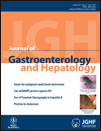Segmental changes in smooth muscle contraction as a predictive factor of the response to high-dose proton pump inhibitor treatment in patients with functional chest pain
Abstract
Background and Aims: High-dose proton pump inhibitor (PPI) treatment leads to relatively little symptomatic improvement in patients with functional chest pain (FCP). This study was to evaluate the use of smooth muscle segmental changes in esophageal contraction as measured by topographical plots of high resolution manometry (HRM) as predictive factors of the response to high-dose PPI treatment in FCP patients.
Methods: Thirty patients diagnosed with FCP were treated with rabeprazole 20 mg twice daily for 2 weeks and classified as positive and negative responders based on symptom intensity score. HRM topographical plots were analyzed for segment lengths, maximal wave amplitudes, and pressure volumes of the proximal and distal smooth muscle segments.
Results: A positive response was observed in 23.3% of the patients. While the pressure volume of the proximal segment was significantly higher in the positive responders than the negative responders (900.4 ± 91.5 mm Hg/cm per s vs. 780.5 ± 133.3 mm Hg/cm per s, P = 0.017), the pressure volume of the distal segment was significantly lower in the positive responders (1914.0 ± 159.8 mm Hg/cm per s vs. 2140.5 ± 276.2 mm Hg/cm per s, P = 0.014). A prominent shifting in pressure volume to the distal segment was observed in the negative responders compared with the positive responders (segmental ratio of pressure volume (SRPV): 2.9 ± 0.5 vs. 2.1 ± 0.1, P < 0.001), and 2.39 was found to be the SRPV that best differentiated positive and negative responders.
Conclusions: A low SRPV was associated with a positive response to high-dose PPI treatment in patients with FCP.




